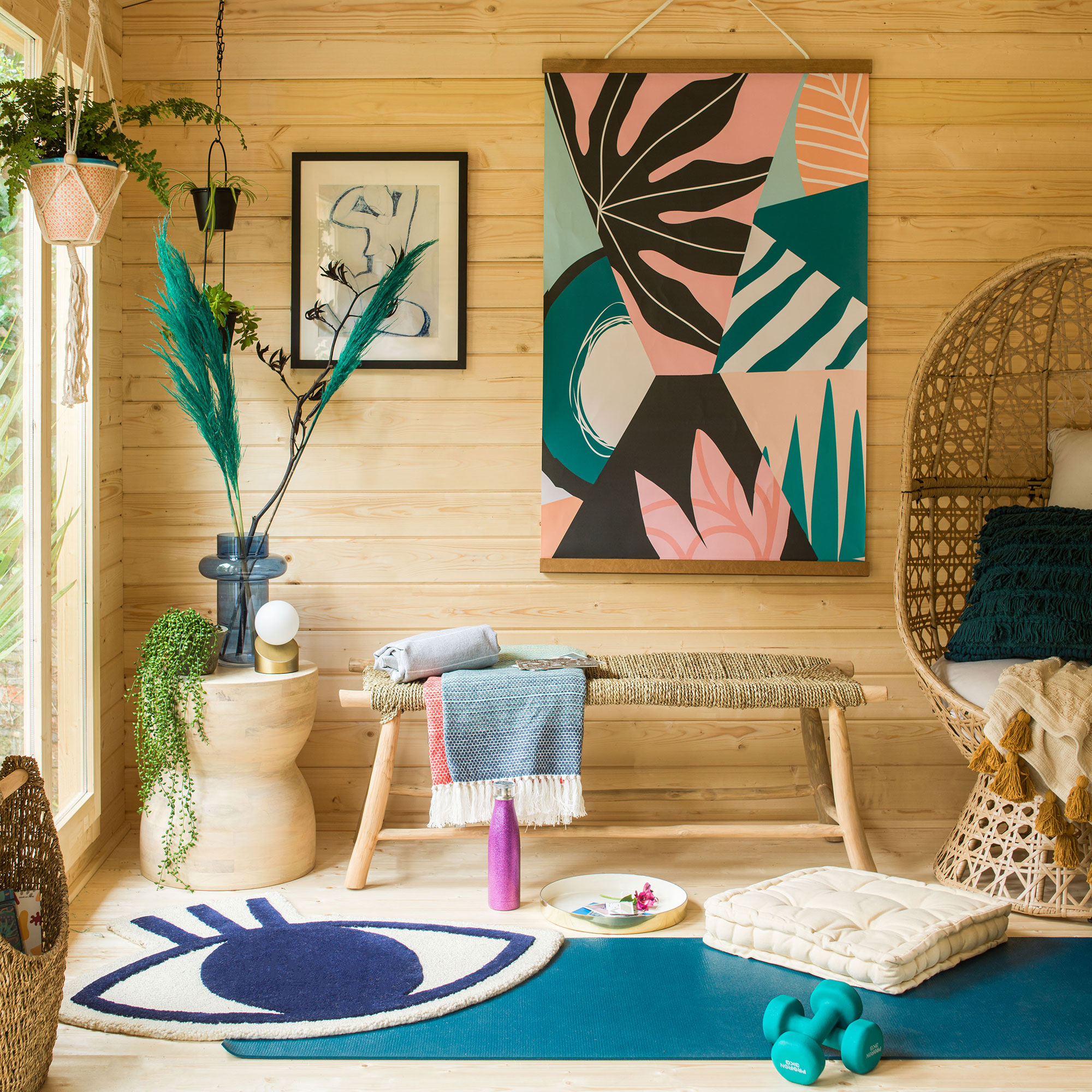
You know you need this. Whether you’re a meditation veteran or a total newbie, creating a place for your practice with some meditation room ideas is a commitment to creating calm in your life and investing in your mental health in the long term.
Whether it's a dedicated room or combined with your living room ideas, taking time to plan your meditation room ideas will set the intent to make a little peace for yourself in 2024.
According to Mental Health UK, more than 8 million people are experiencing anxiety disorder at any one time. Mindfulness and meditation are endorsed by the Mental Health Foundation as tools to alleviate depression, anxiety, addictive behaviour, chronic pain and other problems.
Effective meditation requires a dedicated space where you can practice undisturbed in the optimum environment. Transcending stress starts here…
Meditation room ideas
Use these ideas, recommended by experts, to create a calm, comfortable, quiet and inspiring space for your meditation and mindfulness.
1. Find a distraction-free location

Whether you have a spare bedroom, a studio in the garden or just space under the stairs, it’s possible to create a place for meditation in a relatively small space.
Emma Mills, wellness and meditation expert says, ‘The minimum requirement is a place where you feel safe, that’s comfortable and relatively quiet, especially if you’re a beginner. Closing your eyes makes you feel vulnerable. You close your eyes and turn your attention inwards, and you learn to relax, so you have to feel nice and safe to do that.’
‘You might find a corner of a room in your house that you can dedicate to meditation and make it special. You’d have your special chair or meditation cushion there. The way you decorate or arrange that space for optimum meditation depends on you.’
2. Decorate with nature colours
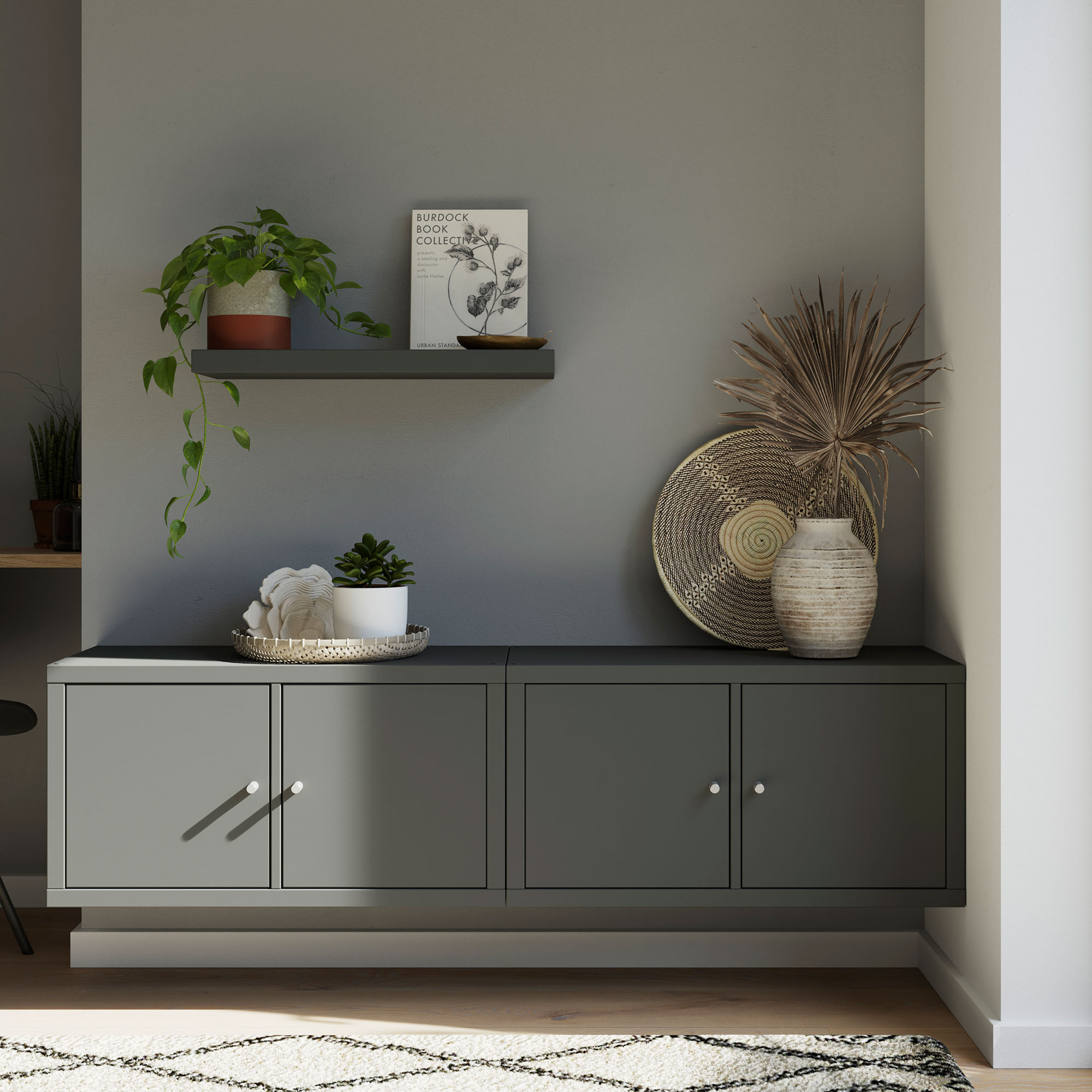
Juliette Thomas an interior designer advises: ‘I’d avoid bold and bright colours as these can be distracting. The palette should be energising yet relaxing, so keep the colours tonal and complementary, but on the neutral side to create calmness and tranquility.’
Juliette, along with Anna Hill, colour consultant at paint makers Fenwick & Tilbrook, recommends a nature-inspired palette to hush your room. Anna says, ‘We would recommend a soft, muted palette using earthy green tones for harmony and balance, or shades with brown undertones. These offer a grounding and stabilising aesthetic that can help to promote feelings of security and peace. Both options are very natural, helping to connect you to the earth and feel a sense of calm.’
3. Use negative space to make it minimalist
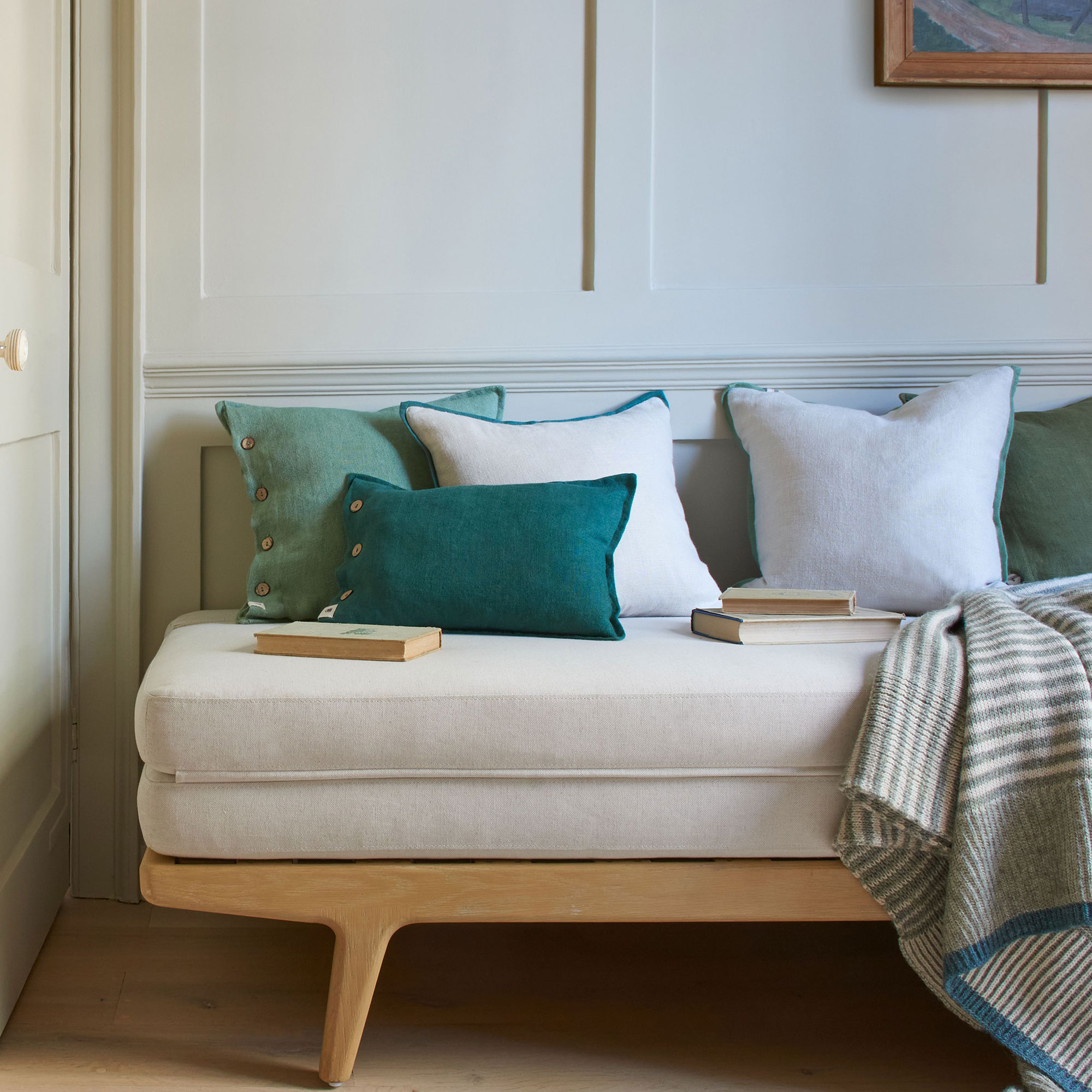
Juliette Thomas advises, ‘The aim of a meditation room is to feel calm, yet energised and this means creating a clear, pared-back environment to really focus. I’d therefore preserve negative space and only incorporate one or two interesting features.
'For example, you could add a wall light to highlight a dark corner and add ambiance to the room or add a tactile piece of artwork that is simple but effective. I’d avoid displaying lots of items and accessories as this can create a cluttered feel.’
4. Benefit from the right light
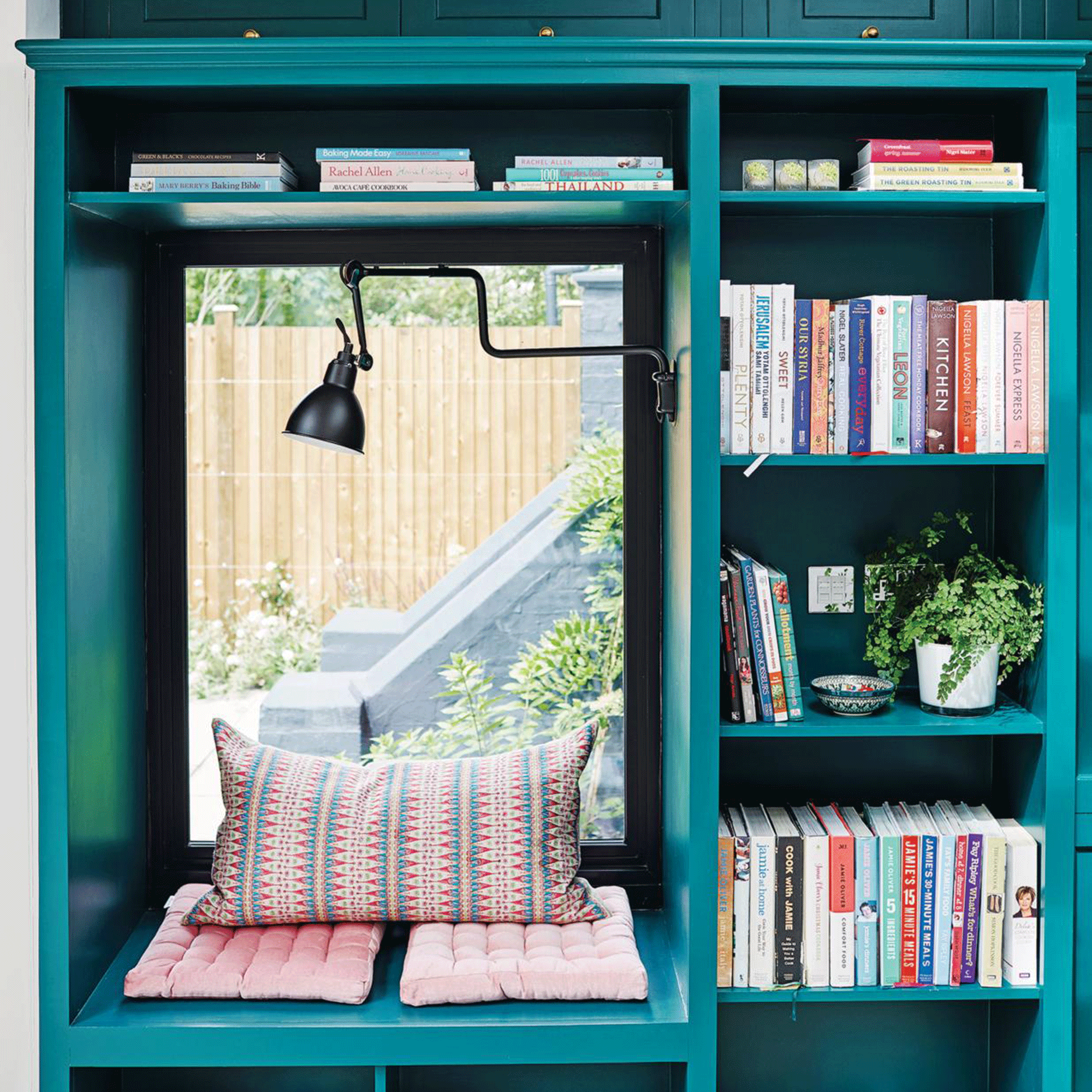
For daytime meditation, settle into a spot that’s flooded with natural light. James Roy, Neurotherapist at Brainworks says, ‘Exposure to natural light is essential for supporting your hormonal system. This is because the amount of light that enters your eyes directly influences the production and regulation of hormones in your body, such as serotonin, melatonin and cortisol, which play a critical role in mood and sleep patterns.’
For after-dark sessions or in a gloomy room, fine-tune your artificial lighting. According to Piero de Marchis, director of Detail Lighting, ‘Low brightness is ideal for a more relaxing session. When exercising on the floor, overhead glare needs to be minimised. Indirect, soft lighting is key, so incorporating low-level lighting along a wall for example is both pleasing to the eye and helps to create a calming and inspirational ambience.’
5. Muffle irritating noises
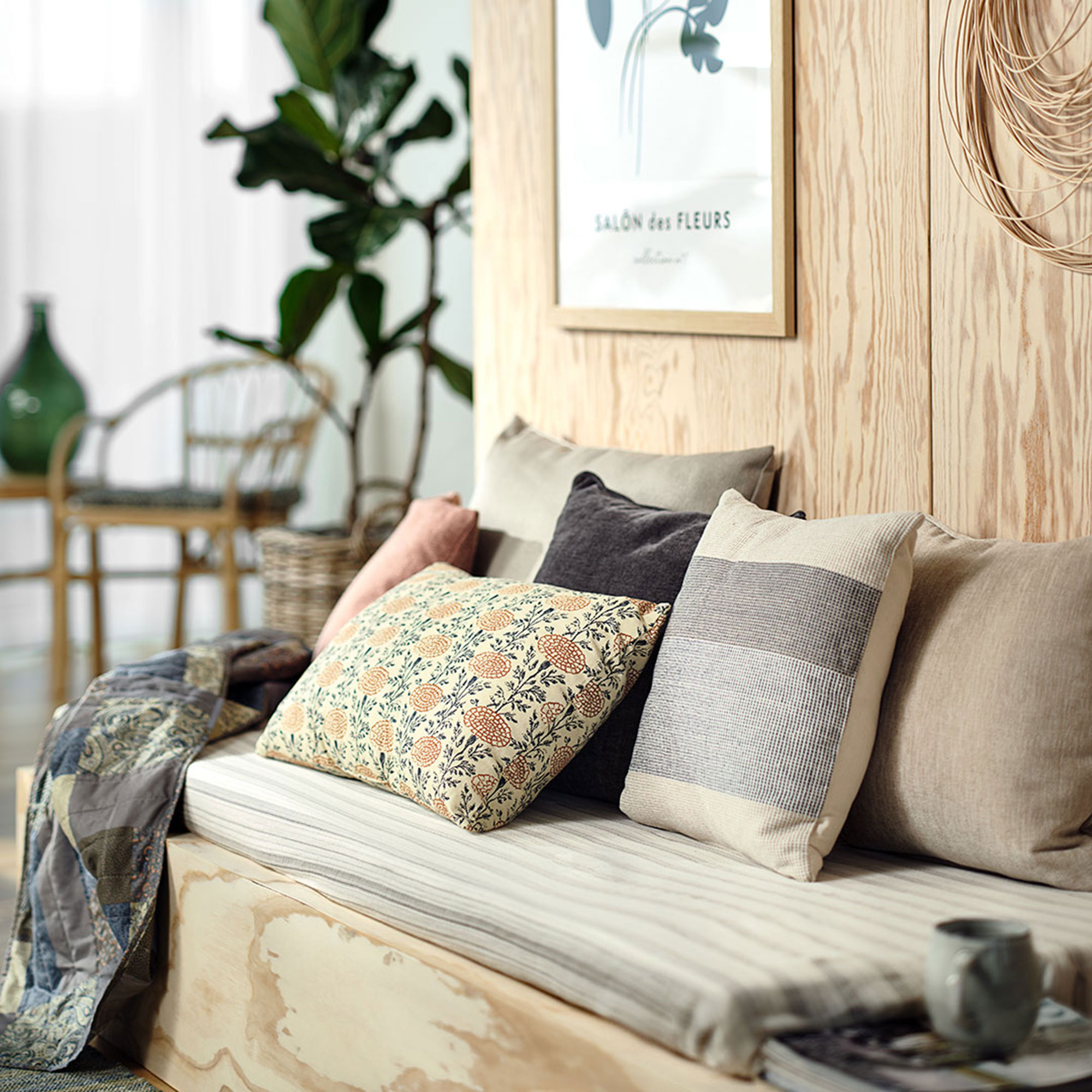
Use sound-absorbing soft furnishings to deaden distractions. Heavy curtains at windows and doors, plush rugs and cushions will all help to create a cocooning space. If this isn’t enough to keep out the sounds of urban noise pollution, think about installing acoustic wall panels to soundproof your room or investing in a pair of noise-cancelling headphones.
6. Set up a supportive seat

Meditation teacher and author Emma Mills advises, ‘You want your body to be as comfortable and at ease as possible so it doesn’t intrude into the experience or cause you any bother, allowing you to move forward in your meditation.
‘I like to put a meditation cushion on the floor on top of an unrolled yoga mat. That way, when you sit on the cushion with your legs folded your knees are on the yoga mat which is quite comfortable. Some people prefer to sit in an upright chair so that the back is supported, the feet are flat to the floor, hands in the lap. You might also have a blanket to wrap around yourself so you don’t get cold sitting still for a while.’
Interior designer Juliette Thomas suggests having more than one option: ‘Introduce different styles of seating for variety and to ensure the room meets all your needs, which may vary from day to day. Create a designated corner for a mat or cushion and combine with deep seating in the form of a chair or loveseat in another corner.’
7. Fill it with soothing scents
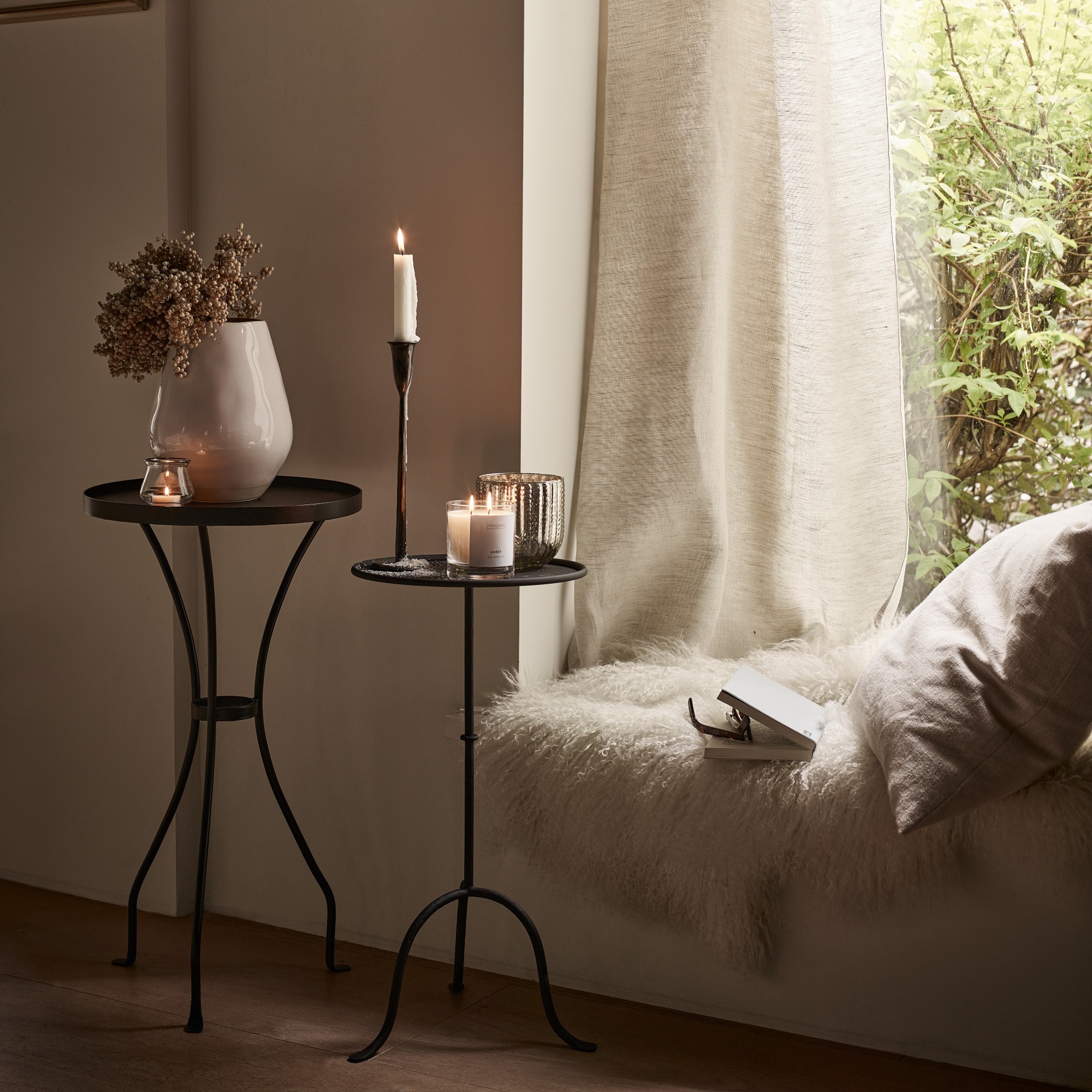
A meditation room should include the best home fragrance to help you calm your mind. Marie Hackman of the International Federation of Aromatherapists says, ‘Essential oils can be used for a variety of reasons, from preparing the meditation space, to deepening the breath, calming the mind, heightening awareness and providing mental clarity. ‘Some of the most commonly used essential oils for meditation include the following:
- Juniperberry - an excellent oil to cleanse and prepare the meditation space and dispel any negative thoughts beforehand.
- Frankincense - for slowing down the breath, bringing about a calm and meditative state.
- Lavender - for bringing balance and harmony to the mind, warming the heart and comforting the emotions.
- Australian Sandalwood - the soft, balsamic, sweet, woody and warm aroma is perfectly grounding and calming.
- Ylang Ylang - a heavy, floral aroma that can be used to help release stressful emotions and create a sense of peace and harmony.’
8. Plant it up
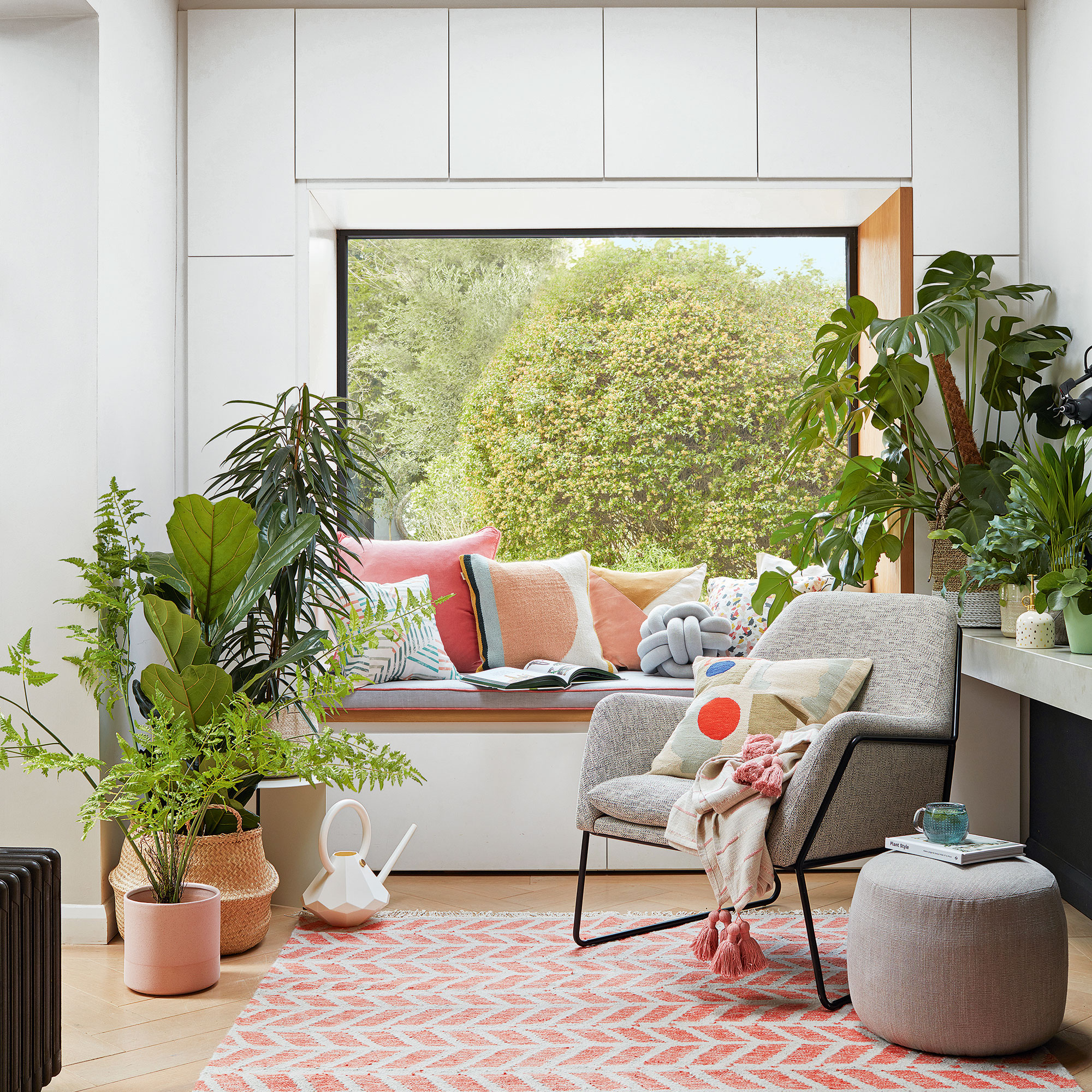
Interior designer Juliette Thomas says, ‘Nature plays a pivotal role in the design of a meditation room, so always think about natural light, natural materials and of course natural elements such as greenery. Plants are purifying and help to clean the air, so introduce an abundance of different plants in varying sizes, colours and species for a dynamic space.’
Judith de Graaff, Designer, blogger and author recommends floor-standing and ceiling-hung plants to avoid cluttering shelves or surfaces with pots. ‘Plants in a meditation room, like a Kentia or Areca palm, can create a serene and refreshing atmosphere that promotes focus and relaxation during meditation sessions,’ she explains.
‘Adding a touch of natural beauty enhances the overall ambience of the space: a tall Strelitzia or a wavy Calathea orbifolia are great choices for a minimalistic yet aesthetically pleasing look.
‘Snake plants and rubber trees are excellent low-maintenance options for floor-standing pots due to their hardiness and ability to thrive in various light conditions, adding a striking and lush presence to indoor spaces without requiring frequent care.
‘Heartleaf philodendron, Tradescantia, Ceropegia woodii and Pothos are fantastic low-maintenance trailing plants, that easily adjust to a variety of light conditions and requiring minimal care while beautifully cascading from hanging baskets or higher shelves or furniture, adding a lush and vibrant touch to any space.’
Judith points out that simply caring for your plants can be part of your preparation for a meditation session: ‘Caring for plants can serve as a meditative practice by fostering mindfulness through focused attention on nurturing and observing their growth: it offers a peaceful and grounding experience that enhances self-awareness and relaxation. Engaging in tasks like watering, pruning, and tending to plants encourages a sense of presence and connection with nature, creating a calming atmosphere conducive to meditation.’
9. Use artwork to help you focus

Emma Mills has hosted meditations at London’s National Gallery and believes that the experience of being with a painting can open us to a greater sense of calm, self-connectedness and inspiration. ‘Some people prefer landscapes showing a broad, open space, but it’s very subjective,’ she says.
‘Different people will find different paintings speak to them and encourage that meditative gaze. There’s a whole practice of using art as an object of contemplation in meditation. It can be a visual focus. Hang your beautiful landscape or nature painting a comfortable viewing distance away and let your eyes move around the piece.’
10. Make the most of a view
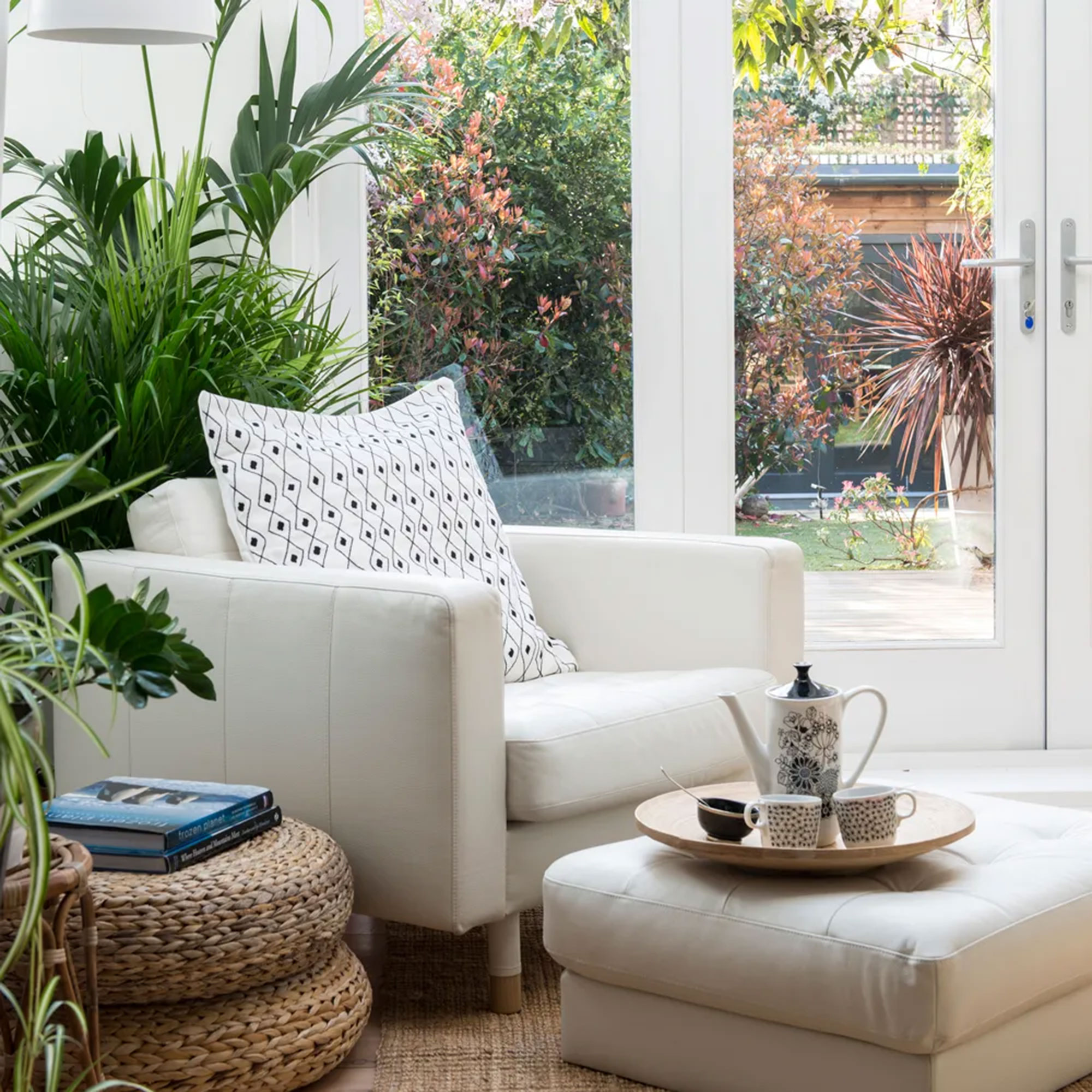
Research shows that just looking at green space can reduce our levels of stress hormone cortisol, improve mood and support mental health. ‘If you don’t have any art at home,’ continues Emma Mills, ‘something that can work really well is to look out of the window and watch the changing scenery. It points to a couple of lessons in life: one that everything changes – that sense of impermanence and that we’re observing a constant flow of experience; and second that there’s something in us that doesn’t change.
'It’s the witnessing presence, the awareness that sees the changing flow in life. Watching things that change brings into sharper focus whatever it is in us that stays the same.’
FAQs
What do you do in a meditation room?
Emma Mills, meditation teacher and wellness expert explains, ‘The essential part of meditation is that you’re transcending the immediate experience, although at first we use the senses, we listen to what we can hear, what we can feel, see and touch to encounter what’s happening now.’
How to turn your bedroom into a meditation room?
Emma Mills says, ‘Some people like to meditate sitting upright in bed with a pillow supporting them, or they have a special meditation pillow or chair they sit on in their room. If you don’t have a dedicated space for meditation, having a special pillow you use each time can be a calming anchor that has an association to it after a while that’s helpful when you go and sit on it. Of course, you can take that cushion with you wherever you go, if you travel.’
What to buy for a meditation room?
This is your shopping list for the perfect space for mindful time:
- Upright upholstered chair
- Floor cushion
- Yoga mat
- Blanket
- Essential oil diffuser
- Table lamp
- House plants
- Large piece of wall art
If learning to meditate is on your new years resolution list for 2024, then set yourself up for success with a dedicated space.







